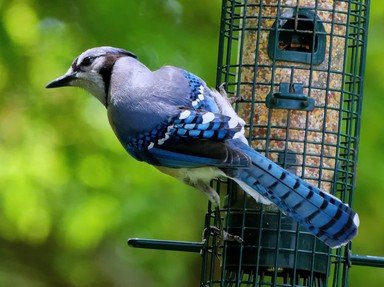Quiz Answer Key and Fun Facts
1. Some birds would prefer to forego the bird feeder and just eat off the ground!
2. According to the Cornell Lab of Ornithology, which of the following types of feeders will attract the most different types of seed-eating feeder birds?
3. Many people have bird feeders in their yards that look like a birdhouse. What is the other name for this type of feeder?
4. What is usually used to turn a bird feeder into a window feeder?
5. Nyjer bird feeders come in two varieties. One is a tube feeder; what is the other called?
6. What type of bird feeder uses an onion bag or wire cage?
7. Sometimes while shopping for a bird feeder, you may find one made to hold peanut butter. Don't buy it! Peanut butter is harmful to birds.
8. What is the term for a hollow cylinder with many perches that is used to feed birds?
9. Which of the following birds would enjoy a nectar feeder?
10. What ingredients would a person need to make homemade nectar for a nectar bird feeder?
Source: Author
ponycargirl
This quiz was reviewed by FunTrivia editor
guitargoddess before going online.
Any errors found in FunTrivia content are routinely corrected through our feedback system.


